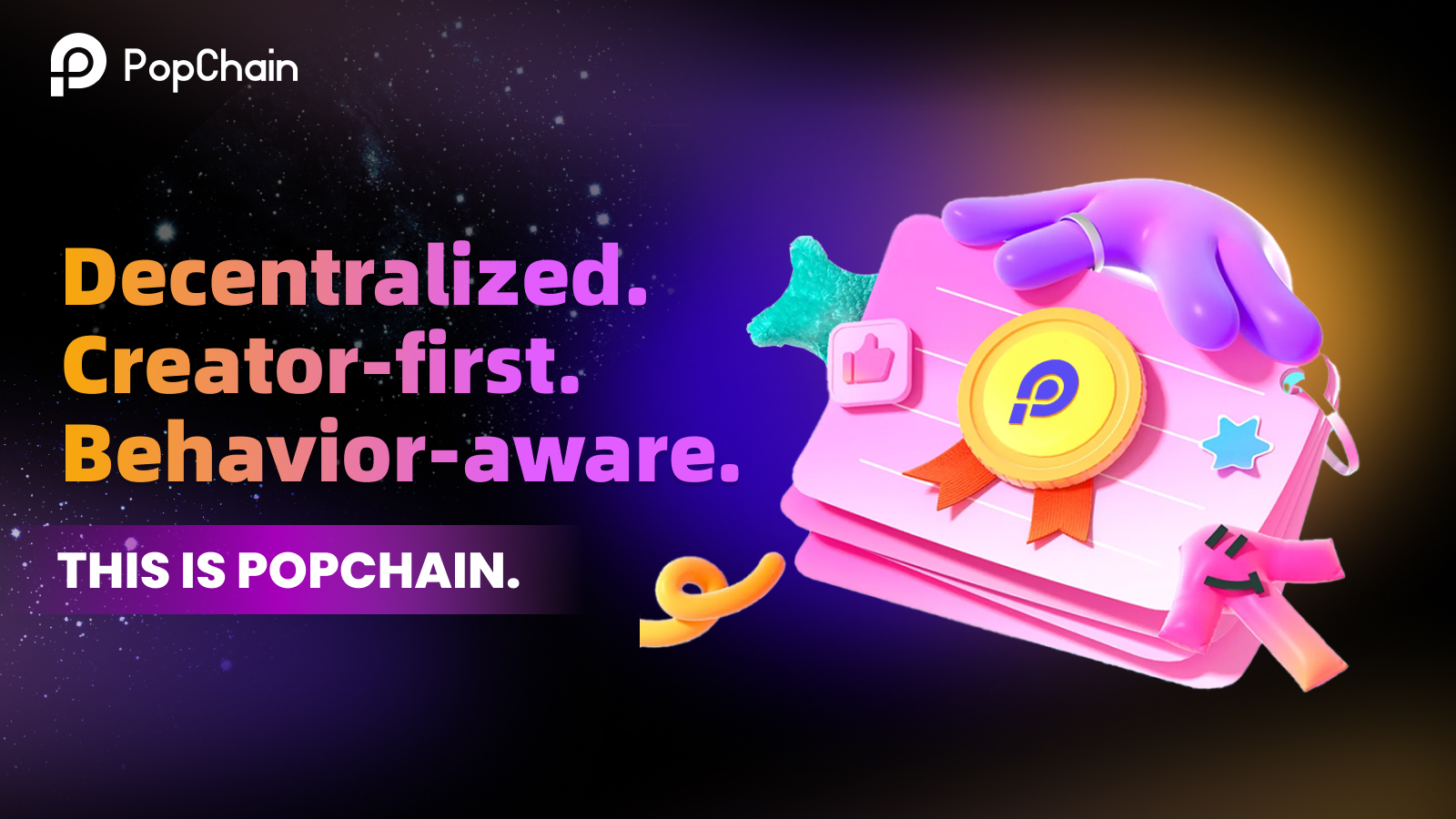In the Web2 world, social platforms control all user data, content, community relationships, and economic power. Countless creators, content producers, and communication nodes create great value for platforms but cannot truly participate in the profits and decision-making.
In Web3, we look forward to a new paradigm: the platform belongs to users, value is driven by behavior, and creators and communicators share the dividends.
PopChain was born under this vision — a Web3 public chain focusing on the “Connector Economy”, committed to assetizing social behaviors and atomically distributing the value of content and interaction to every participant.
1.What is PopChain?
PopChain is a Layer1 public chain built for the social field. It is an infrastructure that connects user behavior, content creation, and incentive mechanisms. Unlike traditional “application-based platforms”, PopChain is positioned as a “social economic public chain” that can be integrated into any Web3 product. It supports core capabilities such as content ownership confirmation, behavior on-chain, incentive design, and community governance.
What it builds is not a single platform, but a basic protocol that can be used by developers, content platforms, KOL organizations, and community DAOs. It aims to inject on-chain trust, open structure, and continuous incentives into the social and content economy.
PopChain’s ultimate vision is to become the “Ethereum” of Web3 social infrastructure — not to compete with platforms, but to empower ecological prosperity.
2.Behavior Assetization: The Core Logic of the Connector Economy
The traditional “creator economy” focuses on creators, while PopChain goes a step further and proposes the concept of the “connector economy”: In today’s attention economy, every share, like, view, and interaction is a value behavior that cannot be ignored. In the Web2 era, these were intercepted by platforms and hidden by algorithms.
PopChain puts these behavior data on the blockchain, and through its designed “behavior asset model”, enables every participant to receive quantifiable, traceable, and tradable incentives. These include:
• Watch-to-Earn: Earn PPT rewards by watching video content
• Engage-to-Earn: The more you interact and spread, the higher the incentive
• Create-to-Earn: Content creators can set revenue sharing mechanisms and issue content NFTs
• Rank-to-Mine: User reputation, level, and activity determine their token distribution and incentive level
This not only breaks the centralized relationship between platforms and users but also stimulates stronger participation and dissemination effects in the social ecosystem.

3.PopChain’s Ecosystem Matrix
PopChain is not just a vision — it has already launched applications and product collaborations in multiple tracks:
• Pop Social: A multi-language supported content social platform that allows creators to publish, NFT-ize, set tipping and access permissions
• BETV: A Web3 video platform that supports short video Watch-to-Earn mode, providing real scenes for “earning by watching content”
• Nivex: An on-chain identity tool that helps users build DID (Decentralized Identity), social profiles, and reputation models
• PunkVerse: An entertainment social platform based on interactive content and multi-role mechanisms, suitable for low-threshold users to experience Web3 social
• PopChain ID: Coming soon — as the unified entrance of the ecosystem, supporting wallet connection, points synchronization, identity authentication, and content accumulation
In addition, PopChain is connecting with mainstream wallets, cross-chain protocols, content platforms (such as RSS aggregators), NFT markets, and media publishing platforms.
In the future, it will form a complete closed-loop ecosystem of “content creation → dissemination → incentive → accumulation”.
4.PPT: The Core Token Design of Ecosystem Power
The platform token of PopChain is PPT (Pop Power Token), which is the key hub for interest coordination between the platform’s various modules and participants.
PPT is not just an “incentive token”, but an exponential function of ecological growth. Its functions include:
• Behavior incentives: All social behaviors are priced and rewarded in PPT
• Governance voting: Users holding PPT can vote on project launches, platform rules, content categories, etc.
• Staking mechanism: Holding and staking tokens can earn rewards, gain whitelist access, participate in node construction, and co-build DAOs
• Payment medium: Can be used for ad purchases, NFT auctions, content payment, and platform fee discounts
• Deflation mechanism: The platform regularly repurchases and burns PPT through fees, ad revenue, etc.
PPT’s model design is not “issue and sell”, but value-anchored through real platform growth, giving it long-term value support.
5.Future Outlook: A New Era of Social Assets Has Arrived
PopChain is not just a chain for social — it is a rewriting of how digital power is distributed. While breaking the monopoly of centralized platforms, it also builds a fair system where everyone can participate and benefit for creators, communicators, and ordinary users.
This is a bottom-up transformation, a “return of power” to ordinary users.In this era of information explosion and traffic overflow, PopChain provides a new paradigm:The value of content is no longer swallowed by platforms, the power of relationships can be confirmed and monetized, and social interaction itself becomes part of the economic system.
In the future, PopChain will continue to promote the following directions with the “Connector Economy” as the core:
• Build an RWA social asset bridge to truly bring real-world identity, reputation, and credit assets on-chain, connecting off-chain value
• Promote a global content incentive network to connect creators and communities around the world and build multilingual and multicultural ecological consensus
• Expand content distribution and interaction mechanisms for Web3 products in education, gaming, and finance to empower the ecosystem
• Improve the DAO governance system to realize real community autonomy from platform building to governance participation
Just as the Internet changed the way information flows, PopChain will change the logic of value attribution in social.This is not only a technical upgrade, but also a leap in philosophy.
On PopChain, every like, share, and repost is a vote for the new Web3 order.